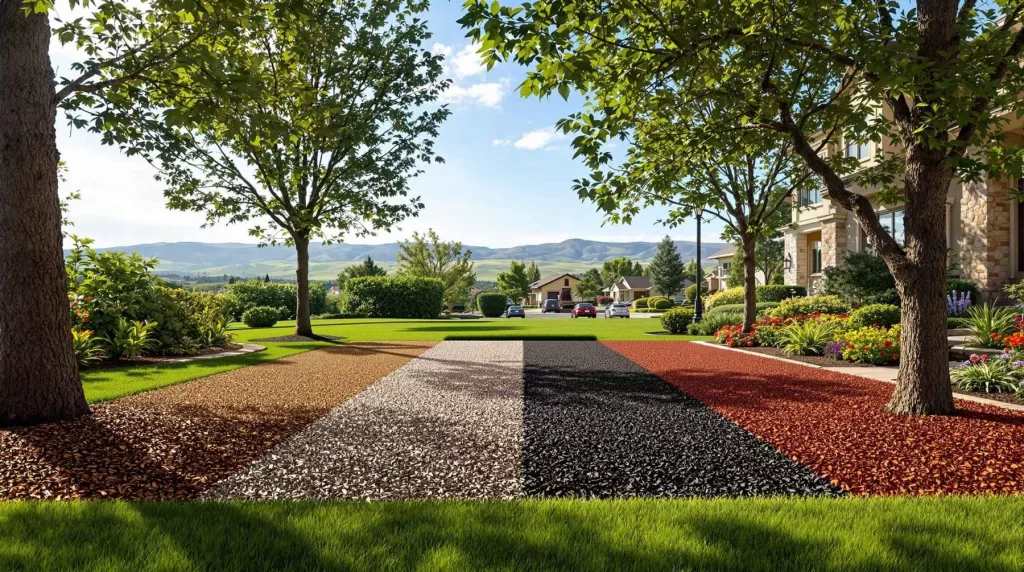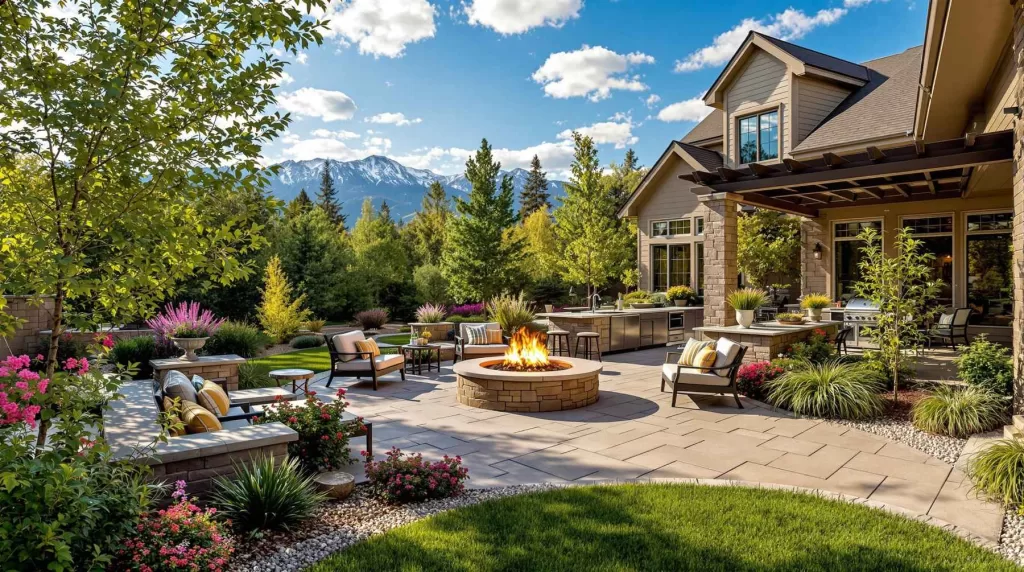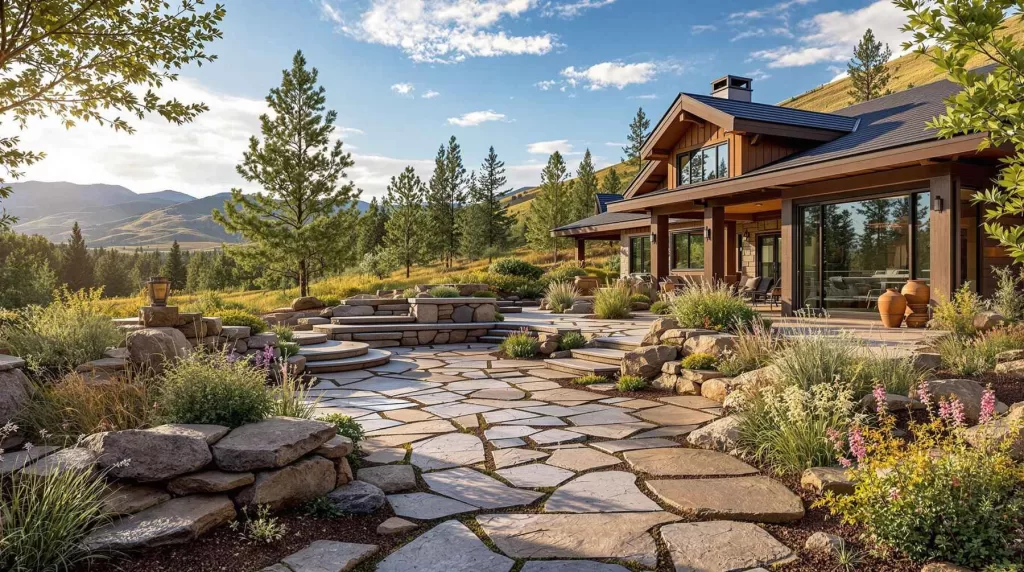Introduction
Castle Pines residents know that maintaining a lush, green yard can be a challenge in Colorado’s semi-arid climate. With frequent drought conditions and rising water costs, many homeowners are turning to drought-tolerant landscaping solutions that are both sustainable and visually stunning. This guide highlights the best plants for low-water landscapes and offers tips on how to design a thriving outdoor space that complements the unique environment of Castle Pines.
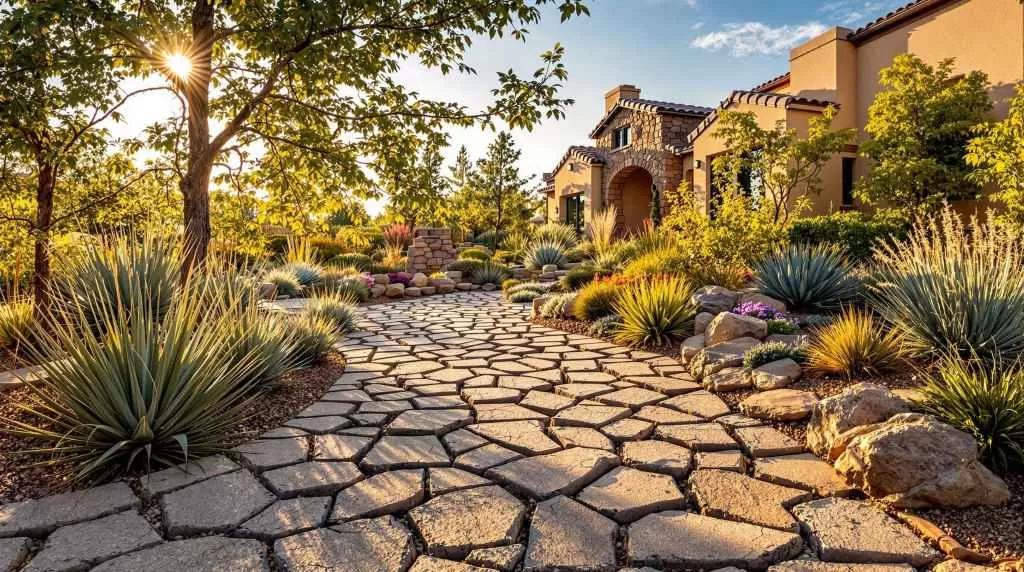
Why Drought-Tolerant Landscaping Matters in Castle Pines
Creating a resilient and low-maintenance yard starts with thoughtful plant selection. Homeowners looking to reduce water use while enhancing curb appeal are increasingly choosing drought-tolerant plants for their outdoor spaces. If you’re considering updating your yard with water-wise options, our page on Landscaping Castle Pines offers expert guidance and ideas tailored to the local climate and terrain.
Climate Considerations in Castle Pines
Castle Pines experiences hot, dry summers with minimal rainfall, making it essential to select plants that can survive extended dry periods. Native and adaptive species are better equipped to handle these conditions, conserving water without sacrificing beauty.
HOA and Water Restrictions
Many Castle Pines neighborhoods fall under HOA guidelines that limit irrigation times and mandate water-efficient landscaping. Choosing drought-tolerant plants helps homeowners stay compliant while still achieving a beautiful, manicured look.
Long-Term Benefits of Drought-Tolerant Design
Water-wise landscapes are more than just practical—they’re an investment. Reduced water bills, lower maintenance costs, and improved plant survival rates all add up over time, making drought-tolerant design a smart long-term strategy for Castle Pines homeowners.
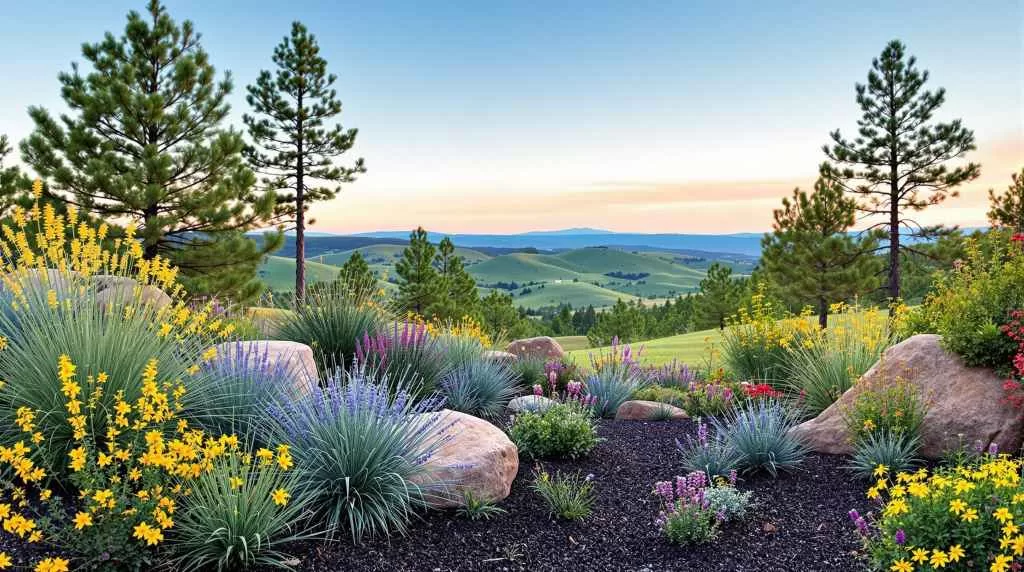
Native Plants That Thrive in Castle Pines
Many homeowners work with trusted Castle Pines landscapers to incorporate native plants into their landscape design because these plants are naturally adapted to Colorado’s unique soil and weather conditions. Native species are not only drought-tolerant—they also support local ecosystems and require less maintenance over time.
Blue Grama Grass
Blue Grama Grass is a warm-season native grass known for its fine texture and flowing seed heads. Once established, it requires minimal water and adds a soft, prairie-like aesthetic to Castle Pines landscapes.
Rocky Mountain Penstemon
With tall spikes of vibrant purple blooms, Rocky Mountain Penstemon is a low-water perennial that thrives in well-drained soils. Its tubular flowers also attract pollinators like bees and hummingbirds, enhancing the ecological value of your yard.
Apache Plume
This semi-evergreen shrub produces delicate white flowers followed by feathery pink seed plumes. Apache Plume is both ornamental and durable, thriving in full sun with little to no irrigation once established.
Rabbitbrush
Rabbitbrush features bright yellow blooms in late summer and early fall, providing color when most plants are fading. It’s a tough, woody shrub that tolerates poor soil and high heat, making it a staple in xeric landscape designs.
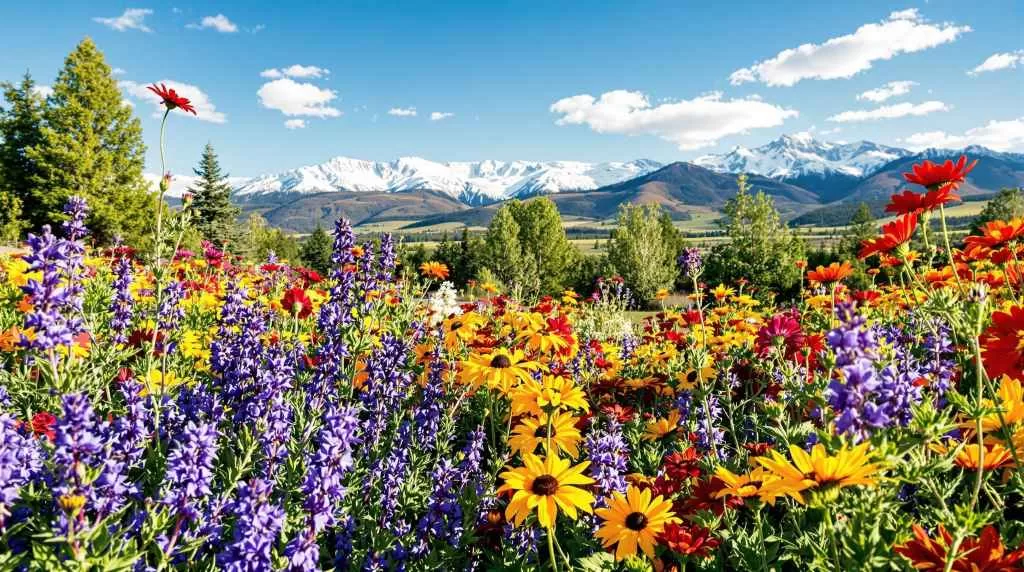
Flowering Drought-Tolerant Plants
For homeowners looking to add vibrant color without increasing water usage, flowering perennials and shrubs are the perfect solution. When designing a custom Castle Pines landscaping plan, it’s smart to include drought-tolerant bloomers that thrive in local conditions while offering seasonal interest.
Russian Sage
Russian Sage delivers long-lasting lavender-blue flowers and silvery foliage, creating a soft, airy texture in the landscape. It’s exceptionally drought-tolerant once established and thrives in full sun with very little care.
Blanket Flower (Gaillardia)
Known for its fiery red and yellow petals, Blanket Flower blooms all summer long and requires very little water. This hardy, sun-loving perennial adds bold color and thrives in poor, well-drained soils.
Black-Eyed Susan
Black-Eyed Susans are cheerful, golden-yellow flowers with a dark center that return year after year. They offer a pop of color during late summer and do well with occasional deep watering, making them ideal for low-maintenance gardens.
Evening Primrose
Evening Primrose opens its delicate yellow blooms in the late afternoon and tolerates dry, rocky soil with ease. It’s a resilient and fragrant addition to any drought-conscious garden, especially in full sun environments.
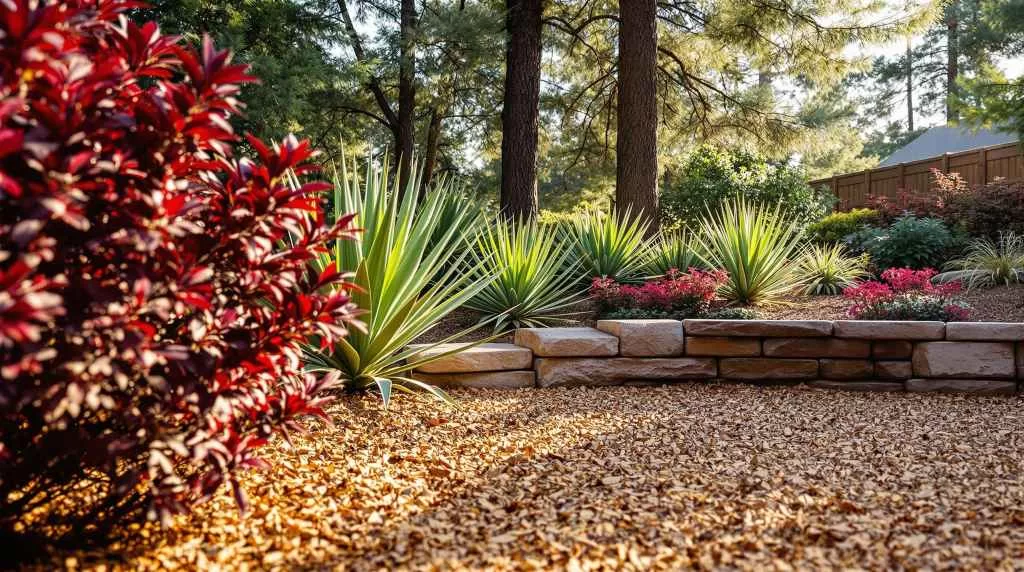
Shrubs and Bushes Built for Drought
When planning outdoor enhancements for Castle Pines homes, incorporating hardy, drought-tolerant shrubs can add structure, color, and privacy while keeping water usage to a minimum. These selections are ideal for both foundation plantings and open garden spaces.
Dwarf Ninebark
Dwarf Ninebark features rich burgundy foliage and textured bark that add depth to any landscape. It’s highly adaptable, tolerates dry conditions well, and requires minimal pruning to maintain its compact shape.
Sumac
Sumac offers brilliant fall color and rugged durability, thriving on hillsides and poor soils where other plants struggle. Its low water needs and erosion control capabilities make it especially useful for sloped areas.
Yucca
Yucca is a bold, architectural plant with sharp, upright leaves and dramatic flower spikes. It excels in full sun, is virtually pest-free, and stores water in its thick leaves to survive prolonged drought.
Leadplant
A lesser-known native shrub, Leadplant produces wispy purple flower spikes and enriches the soil by fixing nitrogen. Its deep root system allows it to withstand dry spells, and it adds a soft, natural feel to xeriscape designs.
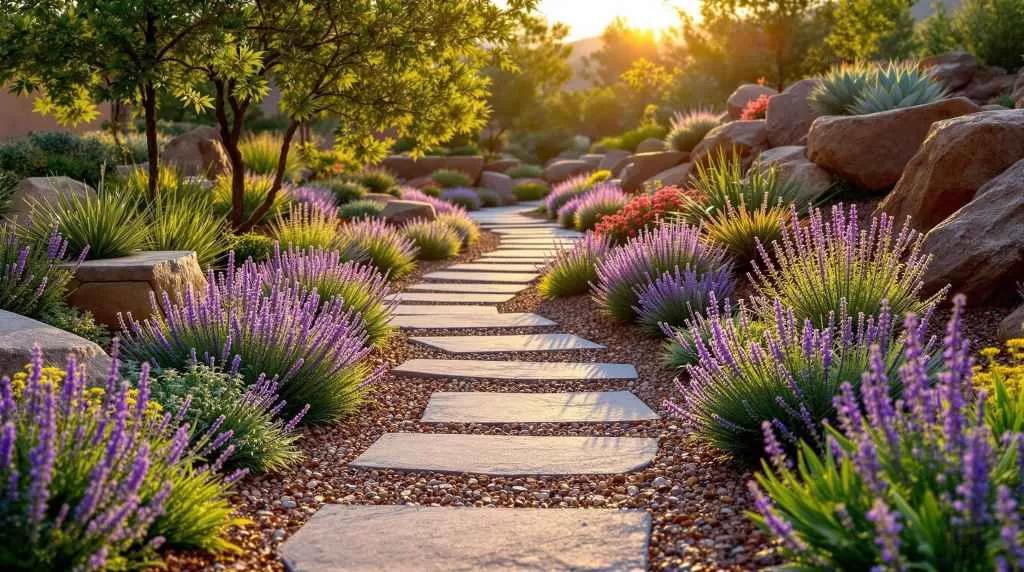
Low-Water Ground Covers
Ground covers are essential in drought-tolerant landscapes for reducing erosion, suppressing weeds, and adding greenery without relying on constant irrigation. These low-maintenance, water-wise options help fill gaps between plants and soften hardscape edges beautifully.
Creeping Thyme
Creeping Thyme is a fragrant, flowering ground cover that thrives in full sun and dry soil. It spreads easily between pavers or along garden borders, providing a lush carpet of tiny purple blooms with minimal watering needs.
Ice Plant
Ice Plant offers vibrant, daisy-like flowers and succulent, moisture-retaining leaves that thrive in dry, rocky soils. It’s especially effective on slopes or in areas with full sun exposure, bringing bold color with very little upkeep.
Sedum (Stonecrop)
Sedum is a diverse group of succulents known for their resilience and seasonal interest. Available in spreading or clumping varieties, they store water in their leaves and offer colorful foliage that changes with the seasons.
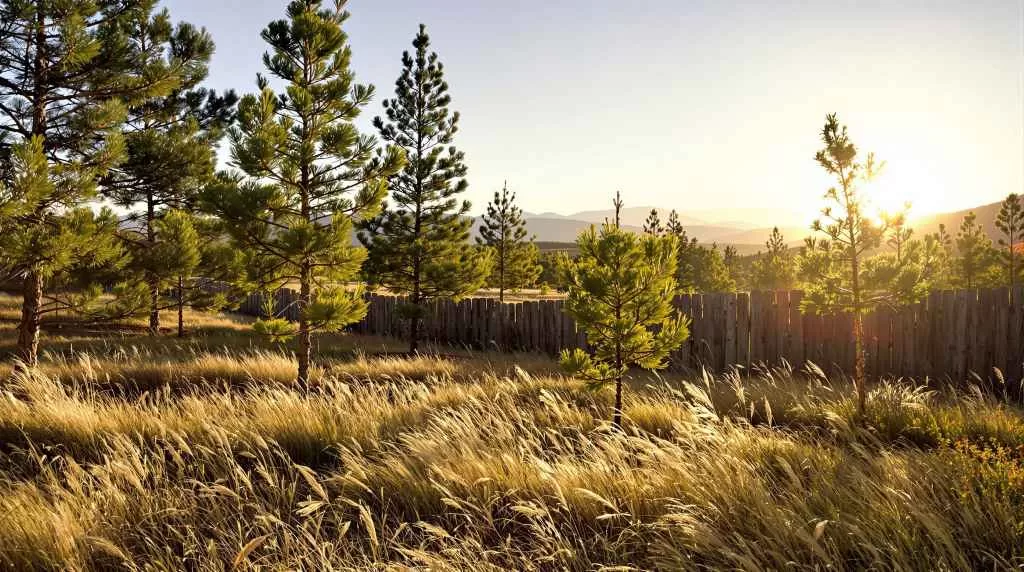
Water-Wise Trees for Castle Pines Yards
Adding trees to a drought-tolerant landscape provides much-needed shade, structure, and long-term value. The following low-water tree species are well-suited to Castle Pines’ dry climate and varied elevations, offering beauty without heavy irrigation requirements.
Pinyon Pine
Pinyon Pine is a compact evergreen that adapts well to dry, rocky soils. Its slow growth and drought resistance make it perfect for smaller residential lots where space and water conservation are priorities.
Kentucky Coffeetree
With its bold silhouette and open branching structure, the Kentucky Coffeetree thrives in poor soil and requires little water once established. It provides light-filtering shade and adds character to large landscapes.
Honeylocust
Honeylocust trees offer filtered shade and golden fall color while requiring only occasional deep watering. Their fine leaflets reduce mess and their adaptability to tough conditions makes them a landscape favorite.
Gambel Oak
Native to Colorado, Gambel Oak is a multi-trunked tree or large shrub that thrives on hillsides and dry slopes. It’s ideal for naturalized areas and supports local wildlife while handling long periods without rain.
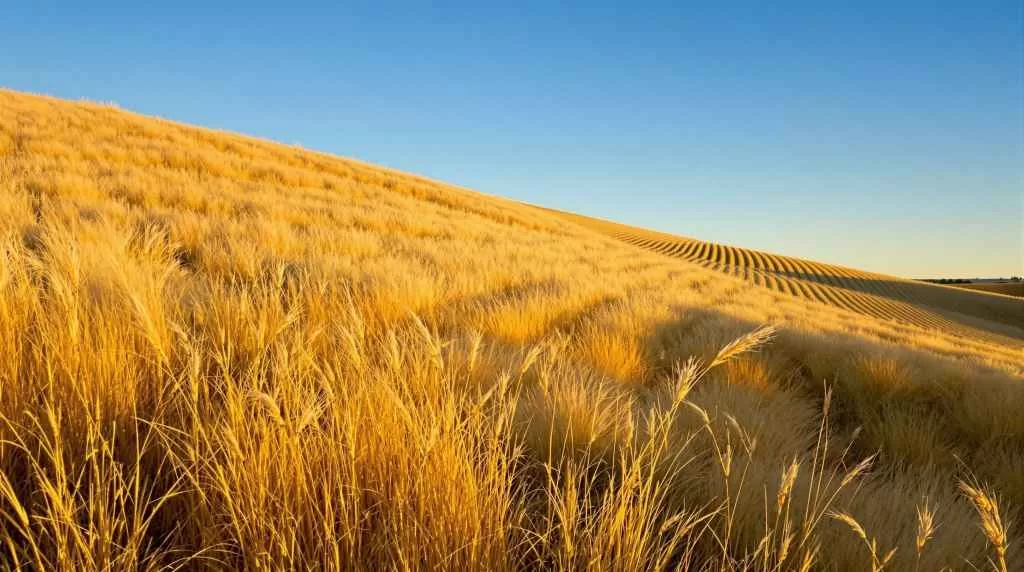
Ornamental Grasses That Conserve Water
Ornamental grasses bring movement, height, and texture to xeriscapes, complementing both modern and naturalistic designs. When integrated into Castle Pines outdoor living solutions, these grasses offer aesthetic appeal with very little water or maintenance required.
Little Bluestem
Little Bluestem is a native grass known for its blue-green summer blades that transition to copper-orange in fall. Its upright form and drought resistance make it ideal for mass plantings or mixed borders.
Feather Reed Grass
Feather Reed Grass provides vertical structure and soft, wheat-colored plumes that sway gently in the wind. It’s a great choice for small spaces and holds up well through winter, adding year-round interest with very little water.
Switchgrass
Switchgrass thrives in a variety of soils and offers airy blooms that turn golden-bronze in fall. Its deep roots help prevent erosion and store moisture, making it an excellent low-maintenance choice for dry, sloped areas.
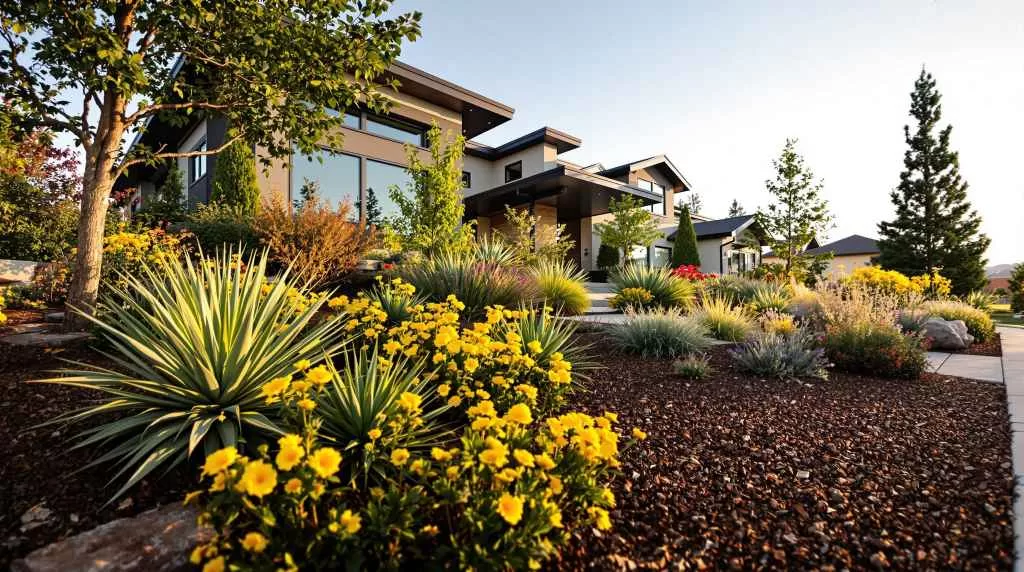
Designing with Drought-Tolerant Plants
A successful xeriscape is more than just picking the right plants—it’s about designing with intention. Strategic placement and smart layering can turn a low-water landscape into a visually compelling and functional outdoor space that thrives year-round.
Grouping Plants by Water Needs
By organizing your landscape into hydrozones, you can maximize irrigation efficiency and minimize waste. Grouping plants with similar water requirements makes it easier to care for them and reduces overwatering risks.
Layering for Depth and Interest
Use a combination of ground covers, mid-height shrubs, and taller focal plants to create depth and dimension. This approach not only enhances curb appeal but also allows for better airflow and plant health.
Color and Seasonal Bloom Strategy
Select plants that bloom at different times of the year to ensure color and texture throughout every season. Blending cool and warm tones adds visual contrast and keeps your landscape engaging month after month.
Mulching and Soil Prep for Success
Proper soil preparation paired with a layer of mulch helps retain moisture, suppress weeds, and regulate soil temperature. Mulch is an easy but powerful addition that significantly improves plant survival in drought conditions.

Common Mistakes to Avoid in Drought-Tolerant Landscaping
Even with the right plant choices, a few missteps can reduce the effectiveness and longevity of a xeriscape. By avoiding these common pitfalls, homeowners can ensure their landscapes stay healthy, attractive, and truly water-efficient.
Overwatering Drought-Tolerant Plants
One of the most frequent mistakes is treating drought-tolerant plants like traditional garden varieties. These species are adapted to thrive on minimal water, and overwatering can lead to root rot and other health issues.
Poor Soil Drainage
Drought-tolerant plants often prefer well-draining soil. Compact or clay-heavy soil that holds water can cause stress and disease. Amending the soil with organic matter or sand can dramatically improve drainage and plant performance.
Wrong Plant Placement
Placing sun-loving plants in shaded areas—or vice versa—can result in poor growth and unnecessary stress. Be sure to match each plant’s sunlight and exposure needs to its exact location within the yard.
Ignoring Mature Size
A plant that looks small in a nursery pot might quickly outgrow its space. Not accounting for mature size leads to overcrowding, competition for resources, and extra maintenance to keep things under control. Proper spacing is key from day one.
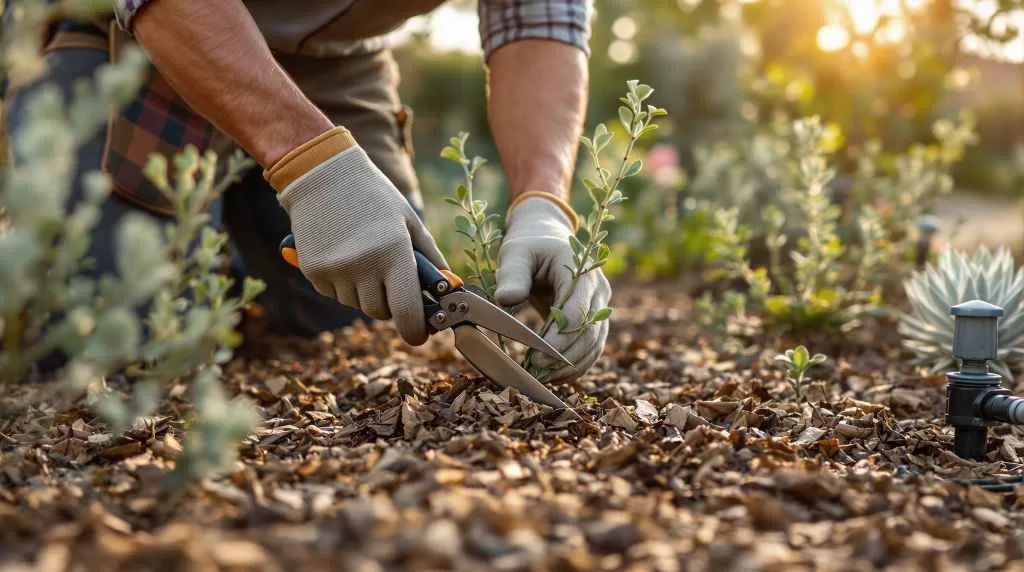
Maintenance Tips for a Thriving Xeriscape
While drought-tolerant landscapes are low-maintenance, they’re not no-maintenance. With a few simple practices, you can keep your xeriscape looking fresh, vibrant, and healthy throughout the year.
Seasonal Pruning
Regular pruning helps maintain shape, remove dead growth, and encourage flowering. Most drought-tolerant plants respond well to light pruning in early spring or after blooming, depending on the species.
Smart Watering Practices
Deep, infrequent watering is more effective than frequent, shallow watering. Using drip irrigation or soaker hoses ensures water reaches the roots while minimizing evaporation and runoff.
Pest and Disease Monitoring
Even tough plants can be vulnerable to pests or fungal issues if stressed. Watch for early signs of trouble and address them promptly with organic treatments or strategic pruning.
Refreshing Mulch and Top Dressing
Over time, mulch breaks down and loses effectiveness. Replenish it annually to maintain moisture retention and weed suppression, and to give your landscape a clean, polished look.
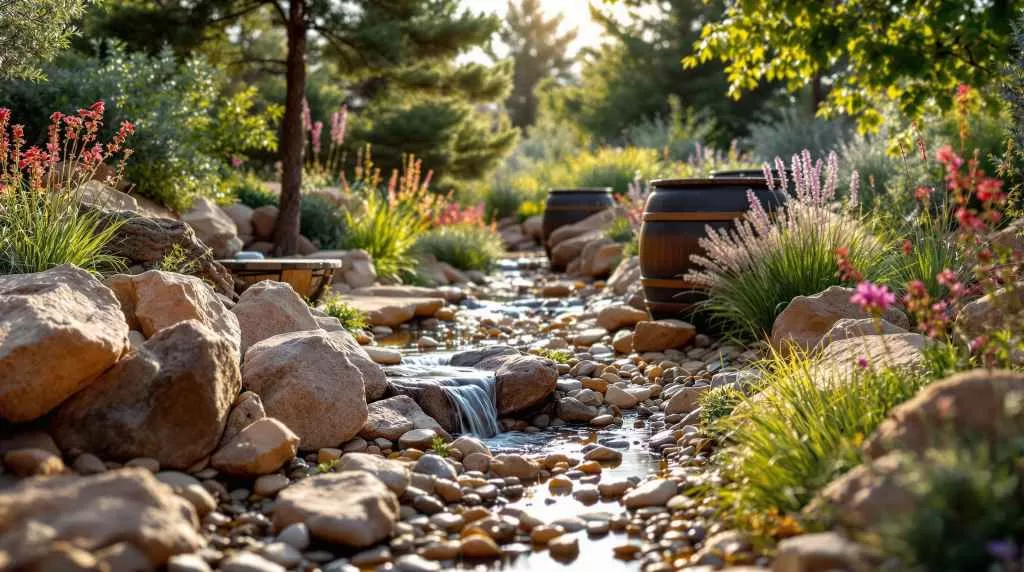
Sustainable Landscaping Beyond Plants
Drought-tolerant design goes beyond choosing the right vegetation—it includes thoughtful additions that support water conservation and long-term property value. Homeowners interested in boosting value with Castle Pines landscaping can combine these sustainable features with drought-tolerant plantings for maximum impact.
Hardscaping and Permeable Surfaces
Incorporating pavers, gravel paths, or decomposed granite reduces the need for turf and helps control runoff. Permeable surfaces allow water to soak into the ground, reducing erosion while maintaining clean, usable spaces.
Rainwater Harvesting Systems
Rain barrels and cisterns collect water from roofs and gutters, providing a free and eco-friendly water source for your garden. These systems can be simple or more advanced, depending on your needs and goals.
Decorative Rock and Dry Creek Beds
Decorative boulders, cobble, and dry creek beds add texture while improving drainage. These features are visually striking and highly functional, channeling water through the yard during storms without using any irrigation.
Incorporating Native Wildlife Habitats
Drought-tolerant plants naturally attract pollinators and beneficial insects. Adding bird baths, bee houses, or butterfly-friendly plants helps support the local ecosystem and brings life and movement to your yard.

Ready to Transform Your Outdoor Space?
If you’re ready to elevate your Castle Pines property with a drought-tolerant design that’s both stunning and sustainable, our team at Custom Landscapes by Design is here to help. We specialize in creating custom outdoor environments tailored to the local climate, using proven materials and low-water plant selections that thrive in Castle Pines and nearby areas like Parker, Castle Rock, and Highlands Ranch. Whether you’re dreaming of a full yard makeover or just looking to upgrade specific areas, we’ll bring your vision to life with smart design and exceptional craftsmanship—let’s build something beautiful together.

